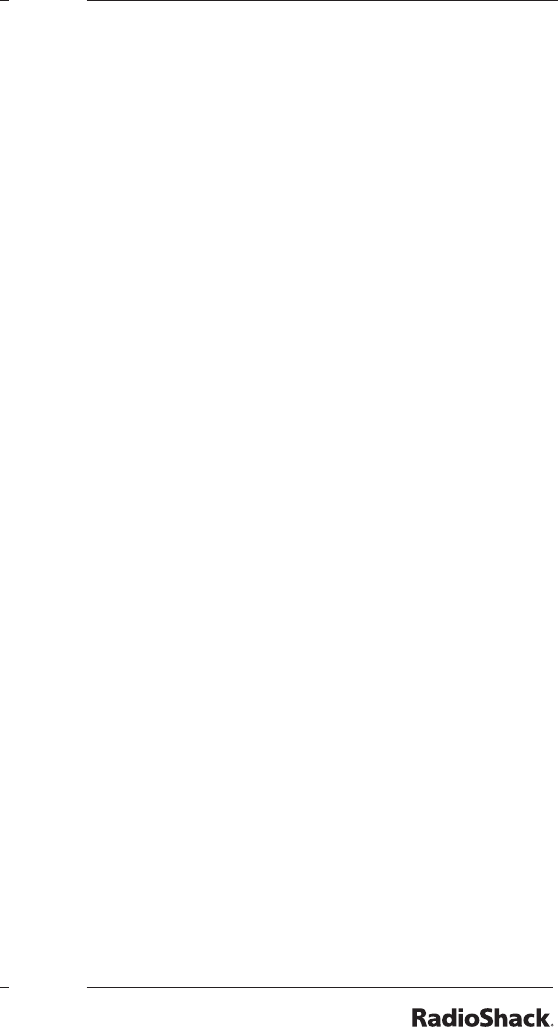
12
13
If you set the squelch precisely at the threshold
where the hissing sound stops, the scanner
may pick up unwanted, partial, or very weak
transmissions. To prevent this, most users
prefer a position a bit past the threshold.
With the attenuator on, the scanner might
not receive weak signals. You can reduce
interference using two attenuator modes:
• Global – (Default) The attenuator setting is
applied to all channels, bands, or groups.
• Normal – Lets you set the attenuator in
each channel, band, or group.
To set squelch:
1. Turn off the scanner and turn SQUELCH
fully counterclockwise.
2. Turn on the scanner. You should hear a
hissing sound.
3. Turn the SQUELCH clockwise to
decrease the scanner’s sensitivity, turn
counterclockwise to increase its sensitivity.
To set the attenuator mode:
1. To set Global mode, press FUNC and then
ATT. On the display “G” appears.”
2. To set the attenuator for each channel, press
FUNC and then ATT. On the display “G”
disappears. To turn the attenuator on or off
for each channel:
• On – Press ATT. “A” appears.
• Off – Press ATT again. “A” disappears.”
You cannot set the attenuator while
scanning.
Delay
Some conversations might take several seconds
between transmissions. To avoid missing a
reply, a delay is automatically set for each
channel. The scanner stops for 2 seconds after
a transmission stops before it resumes scanning
or searching.
To turn the delay on / off:
1. Press ./DELAY. DLY appears if the delay is
on.
2. To turn on the delay, press ./DELAY again.
“dly” appears if the delay is off.
Scanner Setup
A frequency, expressed in kHz or MHz, is the
tuning location of a station.
Your scanner saves frequencies to channels and
groups the channels into banks. The scanner’s
10 banks each hold 100 channels (1,000
channels total).
The scanner is preset to the most common AM
or FM receive modes for each frequency range.
However, some amateur transmissions may
operate in a different mode. If the transmission
sounds weak or distorted, you may have the
channel set to the wrong receive mode:
AM – Amplitude Modulation, primarily used
for aircraft, military, some amateur and
government transmissions.
FM – Frequency Modulation, used for
most public safety transmissions,
broadcast, business, and amateur radio
transmissions.


















